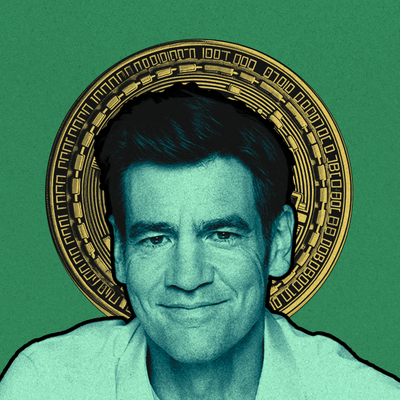
Sponsored By: Alts
Alts is a newsletter that analyzes alternate asset classes, like comic books, tickets, farmland, and more. While everything else in the world was down last week their portfolio was actually up 1.4%.
Learn more about Alts at the bottom of this post, or click here to subscribe for free.
1
In September of 2010 there was a big event held by a major tech company to announce their latest generation of smartphones. The keynote showed off all the wonderful apps made by their developer community, their superior multitasking ability, advanced mapping technologies, and full-sized touchscreens. The key to this company’s strategy was an integration between hardware, operating systems, and software. They were the world’s largest mobile phone maker, and quite profitable too, thanks to superior supply chain management.
The narrative of the event was exactly right. It showed a deep understanding of what a winning strategy in mobile should look like. There was only one problem: the company running the event was Nokia, and the substance underneath their narrative was exactly wrong.
Within three years, Nokia would sell their mobile phone division to Microsoft for $7 billion—a 97% decline from their peak market cap of $273 billion in the dot-com boom era.
In retrospect it’s easy to see that their OS was nowhere near good enough, that they didn’t realistically have the right team to build one, and that just because they sunk so much effort in it over the years didn’t mean that it was a good reason to stay the course. It’s easy to speculate that perhaps Nokia could have gone the way of Samsung, which was also a big player in the pre-smartphone era, but somehow managed to avoid obsoletion and grow even more dominant today.
But it’s only easy to say that now, with the benefit of hindsight and zero personal stakes in the matter. I don’t know what it must have felt like to be in their position at the time. I’m sure it wasn’t easy to see clearly.
When a key Nokia executive—one of the visionaries behind their domination of 90s and early 2000’s—was asked at the time why the Finnish mobile behemoth didn’t abandon their inferior OS and switch to Android, this is what he had to say:
Switching to Android would be like peeing in your pants to keep warm in the winter: temporary relief is followed by an even worse predicament.
This obviously did not turn out to be correct. There are many Android smartphone makers that are in a much better position than Nokia is today.
Why couldn’t Nokia see it?
2
When thinking through a business’s strategy, most of us naturally start with the most basic, immediate questions: What job does the product do? Why now? Any significant dependencies? What alternatives exist, and how do they compare? Rationalists call this the ‘object level’ discussion.
But at a certain point, in order to make sense of all the detail in the object level, the focus must shift to the meta level: general principles of business strategy, like knowledge of how markets work, where power tends to accrete in value chains, and the forces that drive consumer and organizational behavior. Any analysis happening at the object level depends on the strength of the generally applicable paradigms we’re using from the meta level.
Pretty much everything I’ve written in Divinations so far falls into one of these two levels, about a specific company (object level) or strategy principle (meta level).
But based on my experience of the past year, I’m coming to realize there is a third level that is also extremely useful to understand, because the other two levels rest on it: the psychology of strategy creation.
If the object level is about the specifics of an individual business, and the meta level is about the general principles of business strategy, then the psychology layer is about understanding our cognitive and emotional instincts, and how they influence our strategic decisions and behavior.
Based on my own recent experience, I’m realizing just how important it is to become familiar with the mistakes many managers make on this level.
3
As I wrote about in my last post, this year I realized I have been holding back Every.
Specifically, I’ve been fixating too rigidly to the original vision I had for the company. I had a very specific idea of what I thought Every should be, and anything that challenged it was something to either ignore, explain away, or reject.
A perfect illustration of this is my resistance to advertising. I thought Every should focus exclusively on subscriptions, and that building an advertising business would be a huge distraction. Despite my objections we gradually started doing it, it’s been amazing for the business, and I realized I was completely wrong.
(This is just one example out of half a dozen theories I once was quite attached to and now am more loose and curious about.)
If it’s any consolation, I know I’m not the only one who has this problem. I read a wonderful book this weekend about Nokia’s downfall at the hands of iPhone and Android, and that story was full of people rigidly fixated on a paradigm that didn’t work anymore. It might seem ridiculous to compare my minor strategy missteps to the implosion of one of the world’s great brands of the late 90’s and early 2000’s, but I actually think there are similar psychological forces at play. We all have human brains running on human DNA, after all. The main difference is Nokia had way more people and infrastructure invested in their paradigm, making it way more complex for them to let it go.
Because of this, companies facing disruption or obsoletion are rarely able to do the ‘right’ thing, even when it seems obvious to outside observers. Clay Christensen’s work offers some advice to companies facing this kind of challenge (set up an independent team and don’t let the legacy business interfere with it) but it doesn’t seem to me like it has significantly changed the failure rate in the 20+ years since his work has been published. (Although I am open to changing my mind on this and think it’s an interesting question for empirical research to answer!)
But there is good news. While large companies face seemingly insurmountable obstacles overcoming problems at the psychology layer of strategy, individuals face a much more tractable version of the problem. It didn’t take a lot of work for Every to start experimenting with ads once I warmed up to the idea. This is the ‘nimbleness’ that people often associate with startups.
But still, just because it’s easier to steer the ship once you’ve changed your mind, doesn’t make the core task of shifting paradigms much easier.
For that, we need a new paradigm.
4
The main way I know to shift your paradigm is to go through some sort of crisis where it becomes obvious that you were wrong. This is obviously not ideal.
By the time the crisis comes, it’s often too late. In Nokia’s case, the seed of their downfall was sown in the early 2000’s, according to an INSEAD professor who wrote the book on them and collaborated with the company closely throughout that era. By the time their sales started to falter, the iPhone had already been around for a couple years and it was far too late to make a comeback.
So how can we recognize our paradigms aren’t working before the moment of crisis comes? This is tough, especially since the feedback companies get from the market is inherently ambiguous. There are just as many examples of companies that won through persistence as companies that died by grasping onto a failing paradigm for too long.
The best way I know is to study common patterns of human misjudgment and try to see how they might apply to your current situation. Ask your advisers and your colleagues where they think you might be missing a piece of the puzzle. And try to set aside your models for a moment and look at them from an outside perspective.
5
As a closing thought, here are a few of the most useful paradigms I know of in the psychology layer of strategy:
- Cost blindness. Projects are usually more complicated and expensive than they seem. In our imagination we can only conjure so much detail—much more comes into view when we actually get started.
- Schlep blindness. Failure to notice ideas that would be a pain in the ass to do. (Credit to Paul Graham for this one!)
- Paradigm fixation. (This was my problem.) The inability to step outside of one’s expectations and plan for how things should go, in order to notice what is actually going on around you.
- False superiority. (Also known as ‘not invented here’ syndrome.) The tendency to overvalue your way of doing things and look down on other people’s or company’s ways of doing things, when there is no objective evidence of the superiority of your approach.
- False commitment. When you say something is important but don’t actually prioritize it, because at a fundamental level it is difficult or uncomfortable to wrap your head around the implications of the idea. (This was Nokia’s problem—they knew smartphones would dominate, but didn’t take the steps necessary to build a competitive smartphone.)
- Vanity strategies. The tendency for people to make strategy decisions based on a desire to project something about their identity, rather than because it will work. (See also: vanity metrics.)
- ‘Never give up’ mentality. Sometimes it’s best to surrender the battle in order to survive, regain strength, and conquer new territory. But many leaders incur needless damage in order to serve their pride. This was probably the case at Nokia, when they should have abandoned their OS, and it was definitely the case with LBJ and Nixon in Vietnam.
Find Out What
Comes Next in Tech.
Start your free trial.
New ideas to help you build the future—in your inbox, every day. Trusted by over 75,000 readers.
SubscribeAlready have an account? Sign in
What's included?
-
Unlimited access to our daily essays by Dan Shipper, Evan Armstrong, and a roster of the best tech writers on the internet
-
Full access to an archive of hundreds of in-depth articles
-
-
Priority access and subscriber-only discounts to courses, events, and more
-
Ad-free experience
-
Access to our Discord community
Thanks to our Sponsor: Alts
Most of our portfolios have been getting hammered lately. Especially those of us who are all-in on tech stocks and crypto.
It might seem like this is fine, a temporary blip. But the more wise amongst us might consider it an opportunity to consider diversification. For example, did you know that comic books are way up? Or that tickets are mooning? Or that farmland is completely unaffected?
To understand more about these opportunities, read Alts. It's a newsletter that analyzes alternative investment markets so you can reap the rewards. Stefan and Wyatt provide original research and insights to help you become a better investor. Oh, and and get this: They don't just track these markets, they are actually crushing them. While everything else in the world was down last week, their own recommendations were up 1.4%.
Join 26,000 others and find out what you've been missing.
.png)
.png)


Comments